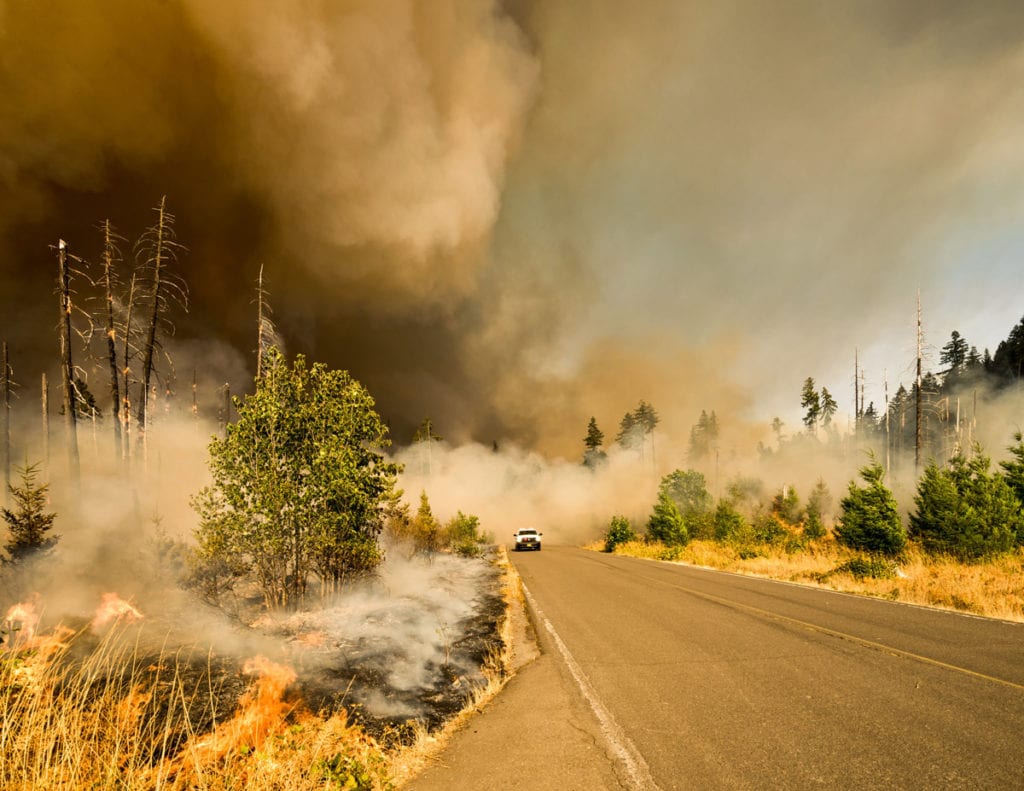THE ARRIVAL OF NEW REGULATIONS ADDRESSING HAZARDOUS WILDFIRE SMOKE EXPOSURE
By: Vito Michael Enrico Mazzei II
In July of 2019, the Department of Industrial Relations issued an official “NOTICE OF PROPOSED EMERGENCY ACTION BY THE OCCUPATIONAL SAFETY AND HEALTH STANDARDS BOARD REGARDING PROPOSED CHANGES TO CALIFORNIA CODE OF REGULATIONS, TITLE 8, NEW SECTION 5141.1 PROTECTION FROM WILDFIRE SMOKE.”
The proposal added four areas of regulation regarding Harmful Wildfire Smoke, upon Employers: 1) Identification Regulations; 2) Warning System Regulations; 3) Training Regulations; and 4) Protection and Ramification Regulations.
Analysis of Pending Requirements Under the Proposal
Identification Regulations
One of the first lines of proposed defenses will be an increased or heightened state of awareness as to identification of the presence of “Unhealthy” air. Essentially, employers would be tasked with the responsibility of identifying harmful exposure to airborne particulate matter from wildfire smoke before each shift, and periodically thereafter, by checking the air quality for particulates smaller than 2.5 microns, or an AQI higher than 150, in regions where workers are located.
However, these actions would only be required when there is a reasonable expectancy that an
employee may be exposed to “Unhealthy” air quality. “Unhealthy” status itself could be reasonably determined by employer access to information provided by agencies such as: The U.S. Environmental Protection Agency; AirNow website; California Air Resources Board; Air Pollution Control Districts; Air Quality Management Districts; and/or Wildland Fire Air Quality Response Program of the U.S. Forest Service. The key thing to remember here is that this burden would not be imposed on the employer unless there is a legitimate and realistic possibility that the employees could be exposed to hazardous smoke from wildfires.
Warning System Regulations
Another invaluable element to these proposals is the actual dissemination of this information to the employees in the form of a warning. Employers will be tasked with the responsibility of relaying their findings to the employee, so they are put on proper notice of the “Unhealthy” air hazards at hand.
Employers would need to inform employees of: Natural or Man Caused conditions that could or have already worsened the air quality in their vicinity; AOI Index readings / PM2.5 levels of particulates and microns; and employers would be tasked with encouraging their own employees to have a system amongst themselves to warn the employer in return of “Unhealthy” air conditions, in the event an employer-level system of identification has failed.
Training Regulations
Of course, with
the implementation of any new identification systems, or streams of
communication, training on their proper use would be required. Specifically,
employers would not only need to train themselves, but their employees in
relation to these new systems as well.
Employees would need to be trained as to their right to seek medical treatment in relation to
“Unhealthy” air side effects, and where they could go to receive such treatment. The workers would need firsthand knowledge on how to take AQI Readings. Employers would need to train employees on the new Standard Operating Procedures (SOPs) of what to do should there be the need for an
emergency evacuation of the outdoor or indoor facility due to “Unhealthy” air conditions.
This would also mean comprehensive training on any and all “Unhealthy” air Personal Protective Equipment (PPEs). Moreover, employers would need to educate employees on both the short-term and long-term effects of prolonged exposure to wildfire smoke and “Unhealthy” air conditions. As of now, additional training requirements are still up for proposal.
Protection and Ramification Regulations
Lastly, and notwithstanding the above, a plan is not worth much if there are no proposals for actual protection methodologies or ramifications. Luckily here, Cal/OSHA has proposed some protections and preventative steps to be taken.
When it comes down to protecting the body against foreign and harmful substances or situations, Personal Protective Equipment (PPEs) is an easy first line of defense. When the employees are reasonably likely to be exposed to the hazardous effects of wildfire smoke, the employers would then be charged with the responsibility of providing Personal Protective Equipment to remove or significantly reduce employee exposure to wildfire smoke.
This could include air scrubbers, respirators, removal of the employee to a safe zone, and possibly an altogether close of operations until such time the work zone has become safe once again.
Final Thoughts
As the proposal sits, there are still no final rules or regulations on the books yet. However, due to the comprehensive proposal currently on the legislative floor, it will only be a matter of time until we have black letter law referencing this topic.
Given the myriad of potential litigation issues that could conceivably come forth from this topic, comprehensive employer level documentation showing compliance with the four above regulation sections will be a crucial factor in defending these claims. Lastly, a thorough investigation into applicant’s medical background to check for possible pre-existing respiratory disorders will be a vital line of defense.



